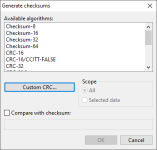modem7
10k Member
Cassette BASIC is sure to be interrogating the BIOS for RAM size, and so for version C1.00 of Cassette BASIC, I expect that you will have seen the displayed "61404 Bytes free" text change to "12252 Bytes free".
In the back of my mind has been the thought that your motherboard may also have a RAM refreshing problem. The symptoms vary greatly, are inconsistent, depend on the RAM amount, etc. And the Supersoft Diagnostic sometimes passes the MEMORY REFRESH TEST.Correct. I was charging my phone, so I wasn't able to take a snapshot, and it didn't occur to me to use my mirrorless camera to do the same. But yes, that shows up, but after typing a long string, and ESPECIALLY after typing enter, the system halts with a blank screen and cursor.
Some experimentation of mine is shown at [here]. Reading that, you will note that in Cassette BASIC, often the problem is not seen by the user until the time that the ENTER key is pressed. As I mentioned earlier, there is great inconsistency seen, and so one should not look at that web page and come to the conclusion that their motherboard must not have a refresh problem just because their symptoms don't match those on the web page.








